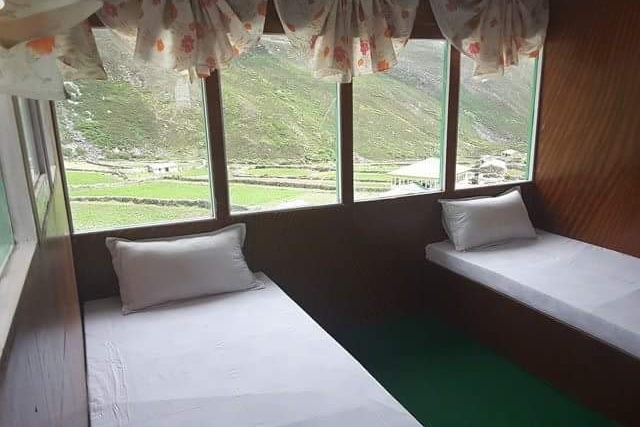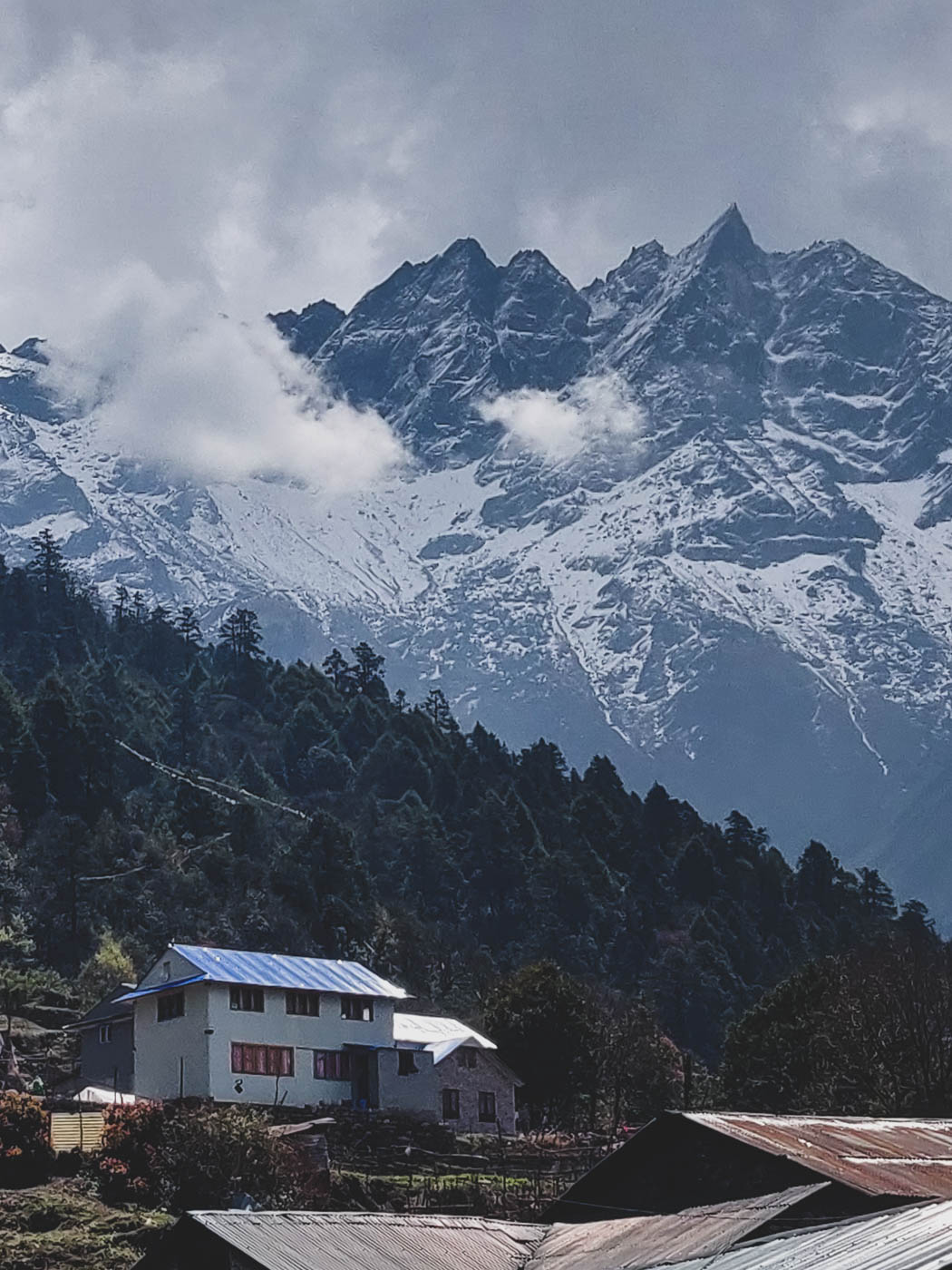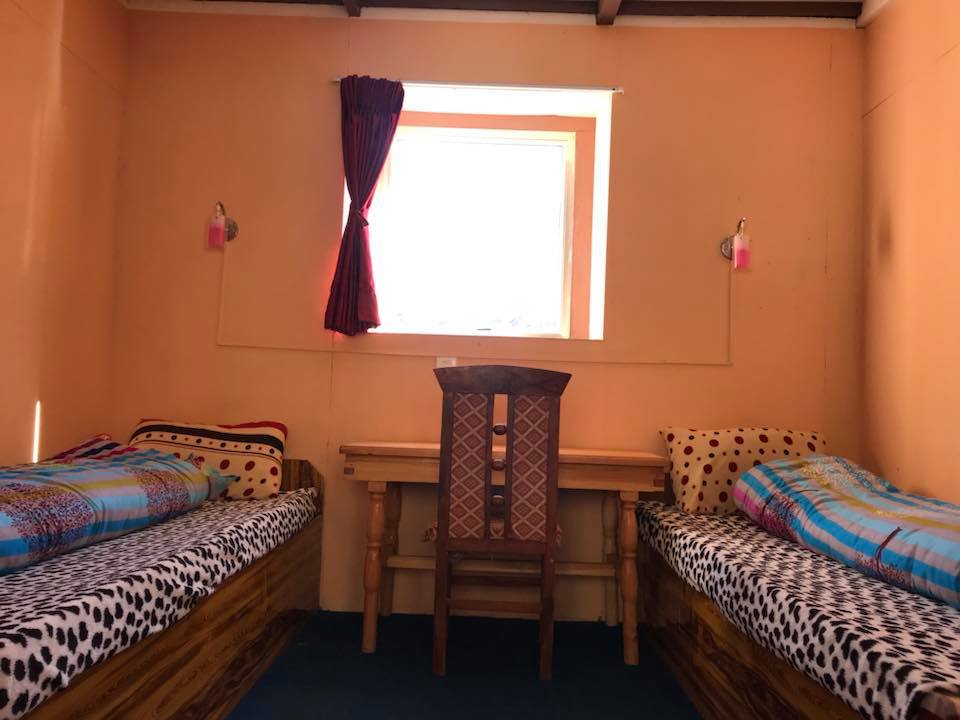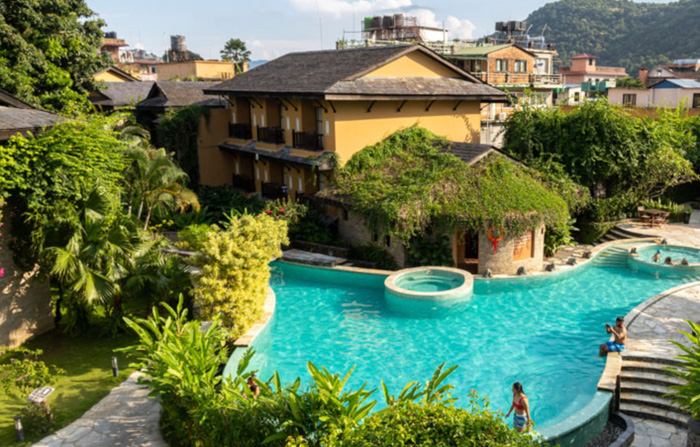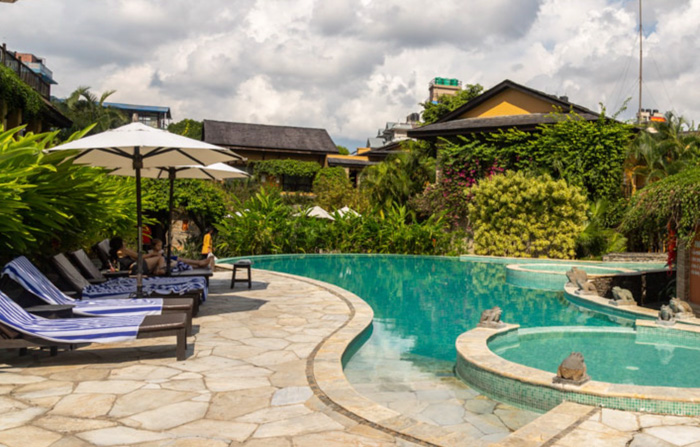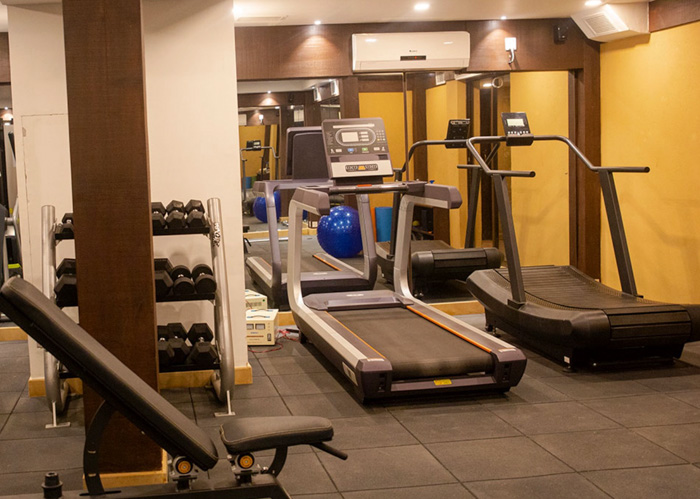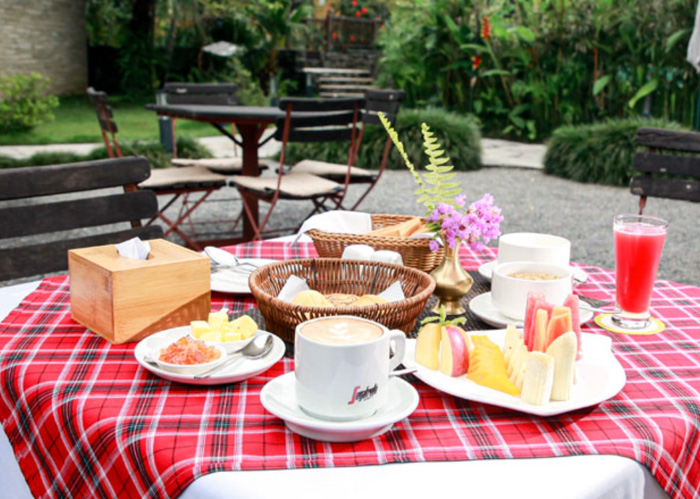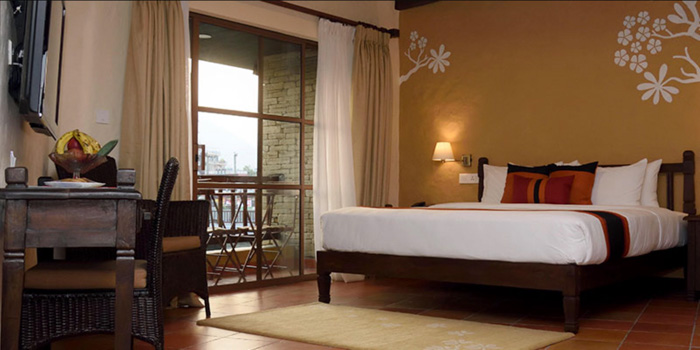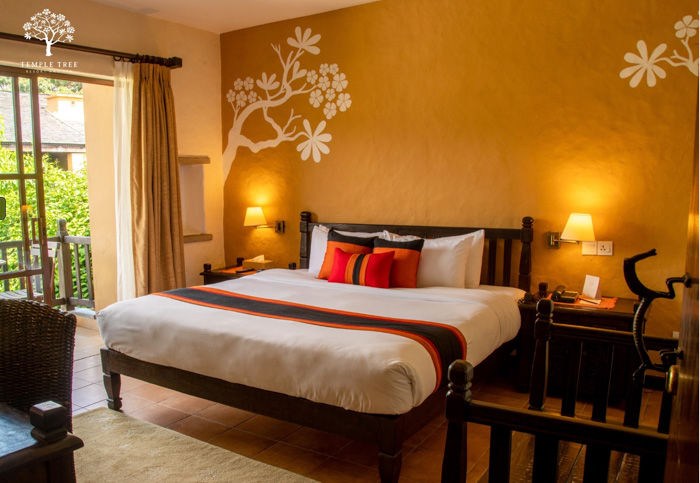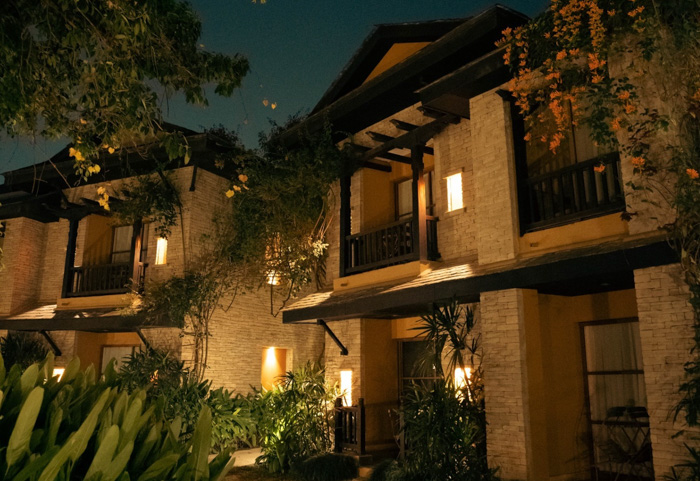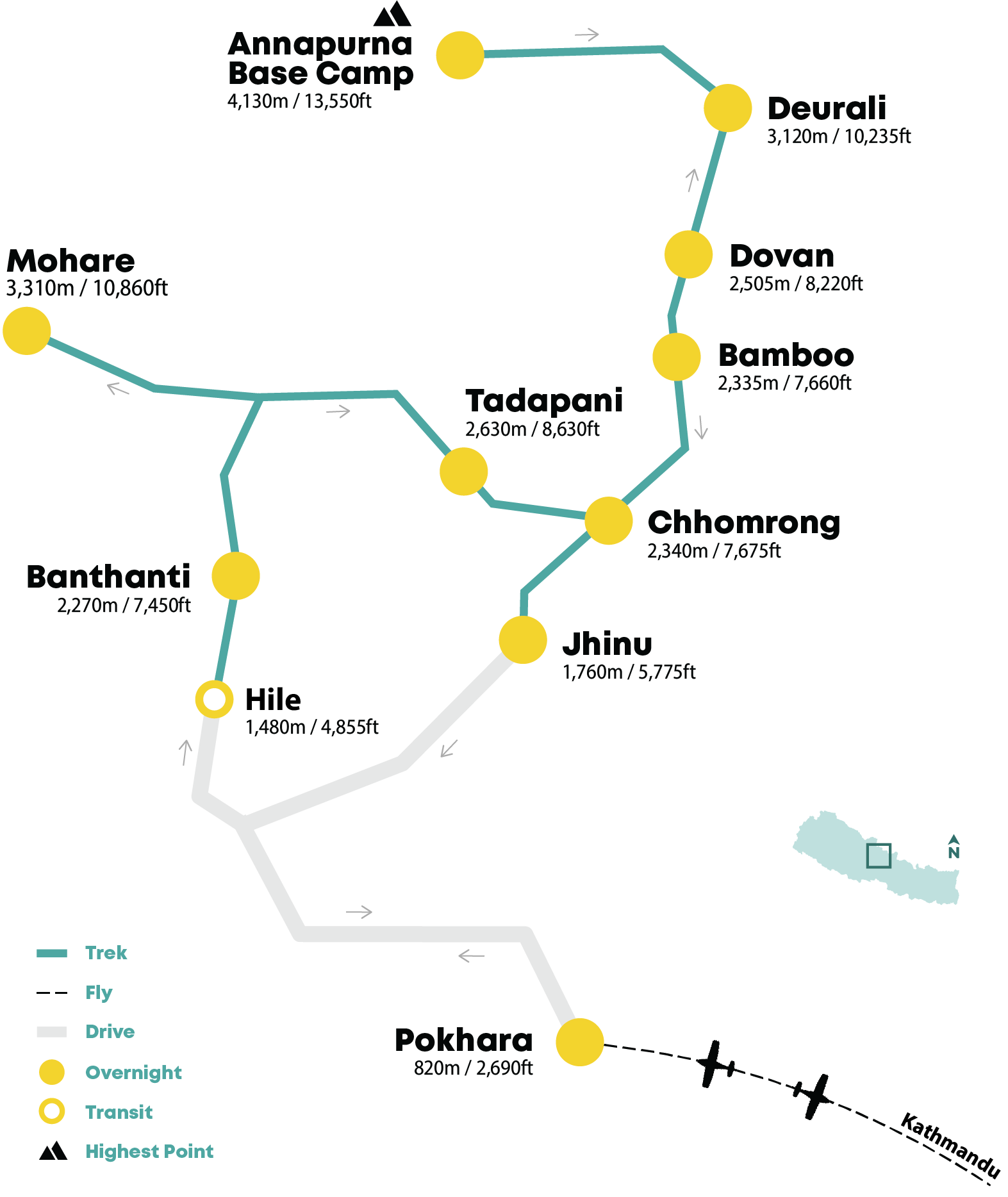|
Mountain Trek / Annapurna Region / Nepal Annapurna Base Camp and Mohare TrekNext tentative Date: Available as a Private Trek on a date of your preference.
Treat yourself with the best of Annapurnas. The stunning wide panoramic Himalayan views from Poonhill and the journey to the foot of Annapurna will take your breath away. |
Overview
Treat yourself with the best of Annapurnas. The stunning wide panoramic Himalayan views from Poonhill and the journey to the foot of Annapurna will take your breath away.
Highlights
| Find yourself in the shadows of the mightly Annapurnas, the eighth highest mountain in the world. | |
| Witness the spectacular 360 degree views of the snow-capped mountains up close in a matter of a week. | |
| Experience the majestic sunrise and sunset from Poon Hill and Annapurna Base Camp. | |
| Trek among the gorgeous rhododendron forest trails, pass stunning rivers and natural hot spring. | |
| Come across picturesque Gurung villages and tiny rural settlements. | |
| Rejuvenate in one of the finest accommodations in the lake city of Pokhara after the trek. |
The Poon Hill and Annapurna Base Camp trek is considered a moderate to challenging trek with a mix of steep and gradual ascents. The highest point of the trek is ABC (4,100m / 13,450ft). To minimize the risk of altitude sickness, we will maintain a slow and easy pace. On average, you can expect to walk for 4-6 hours each day. The trails are generally well-maintained; however, some sections have rocky or uneven terrain, and are prone to landslides, especially as you ascend closer to the base camp.
Due to restrictions imposed by local authorities, the number of hotels operating in the region is limited, resulting in basic accommodation facilities along the way to the base camp. As you ascend to higher altitudes, it is likely that you will stay in dormitory-style rooms with 6 to 7 beds. Rest assured, you will be accompanied by experienced guides and porters who will carry your luggage during the trek, ensuring safety and providing you with a great experience.
Best time to go
JanFebMarAprMayJunJulAugSepOctNovDec
JanFebMarAprMayJun
JulAugSepOctNovDec
| Group Sizepax | Fixed Departureprices per person | Regularprices per person |
| 3 | USD 1200 | |
| 4 - 7 | USD 1100 | |
| 8 & up | USD 1025 |
|
|
|
|
|
Prices valid until Dec 31st, 2026
Prices for expats is less by USD 75
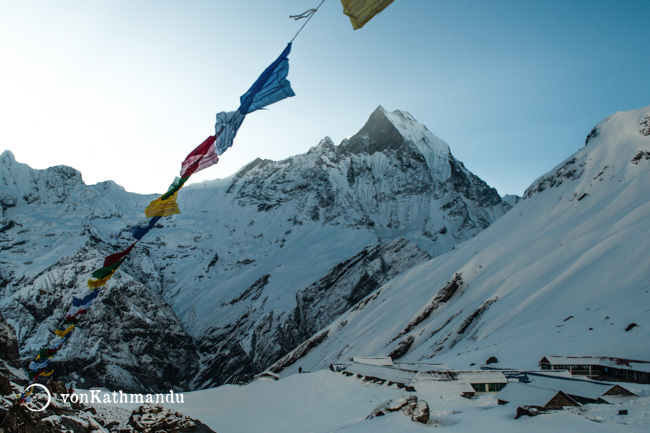
Annapurna Base Camp after a night of snowfall
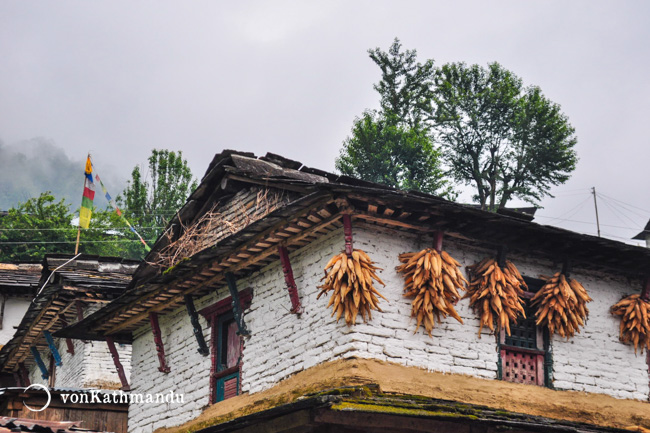
Maize left for drying on a traditional Gurung house
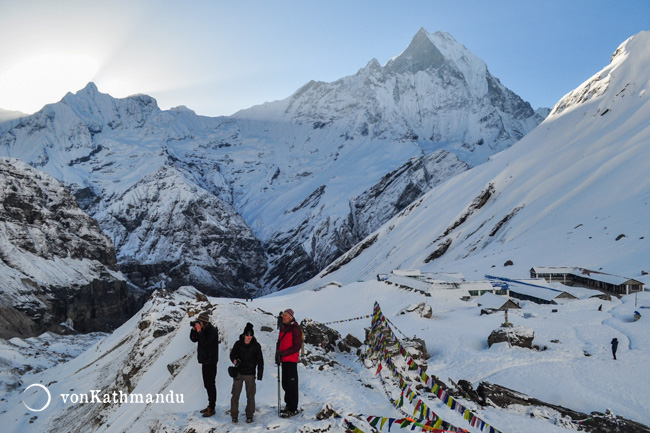
Macchapuchare seen from Annapurna Base Camp
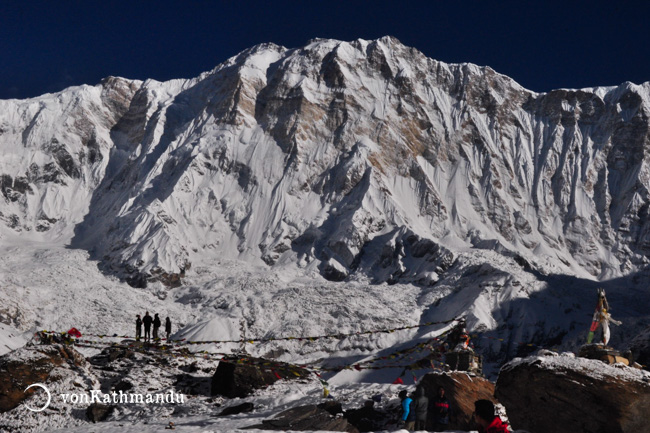
Imposing massif of Annapurna I stands at 8091m above sea level
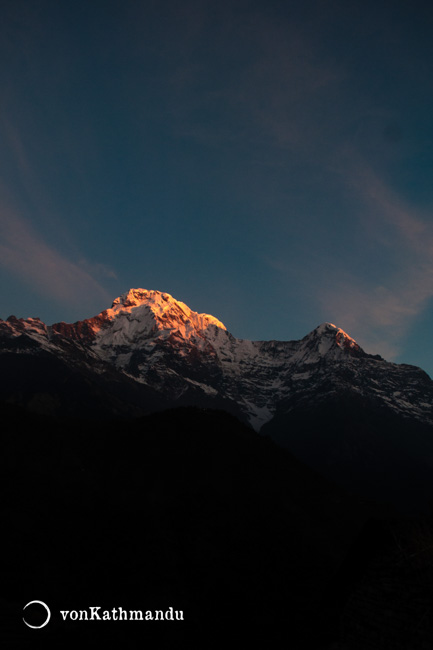
Annapurna South and Hiuchuli as observed from Ghandruk
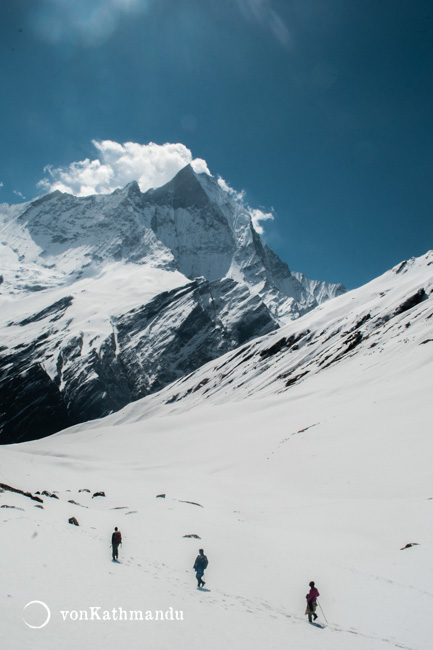
Machhapuchare mountain
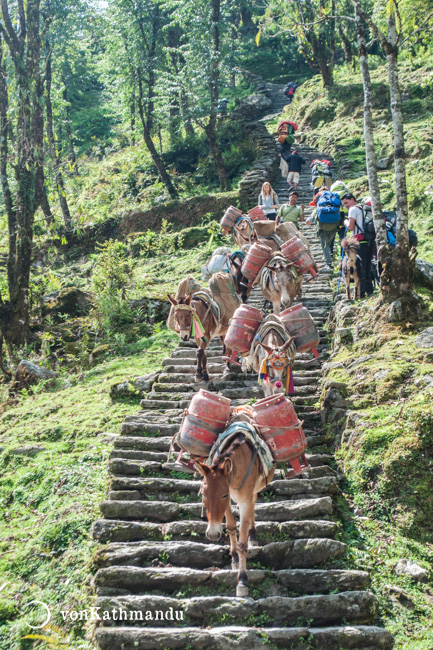
The preferred beast of burden on ABC trails are mules and donkeys
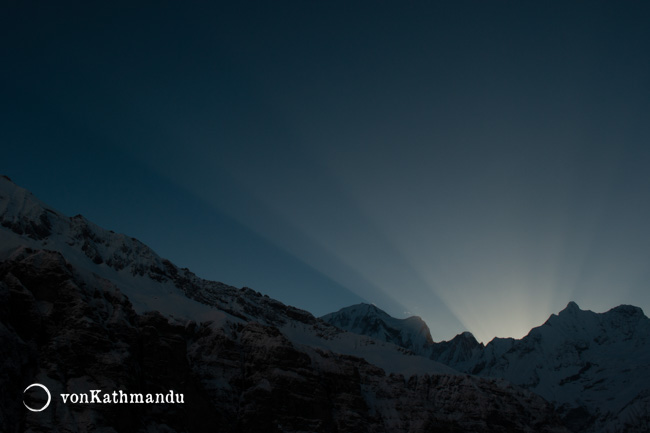
Bursts of morning rays over Annapurna
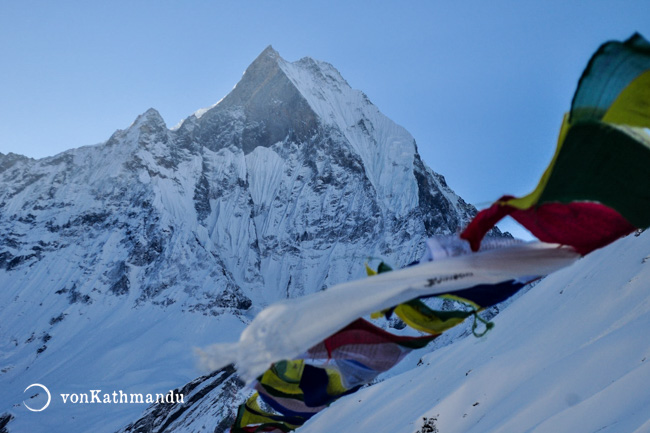
Fishtail Mountain with fresh snow
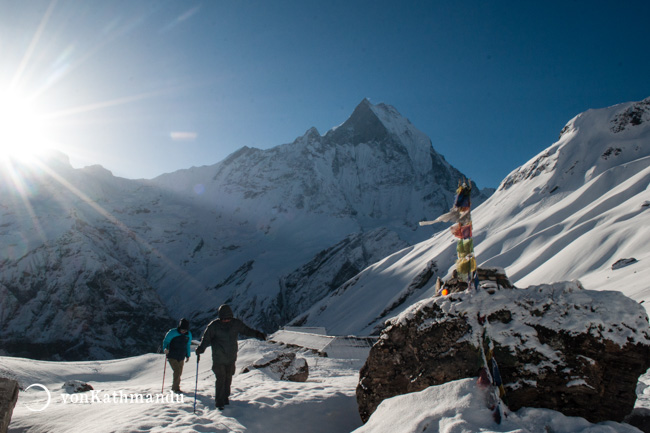
Trekkers make their way to a viewpoint near ABC
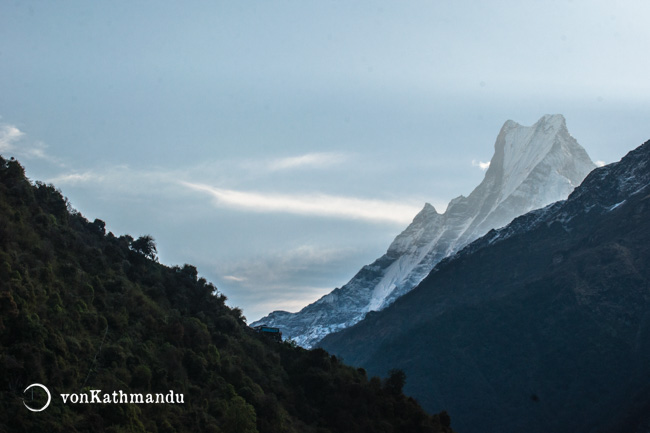
The classic double peak of Machhapuchare seen from Sinuwa
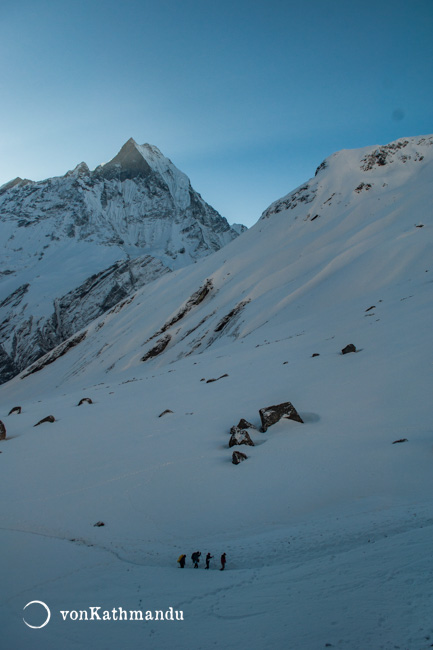
Snowy trails to Annapurna Base Camp
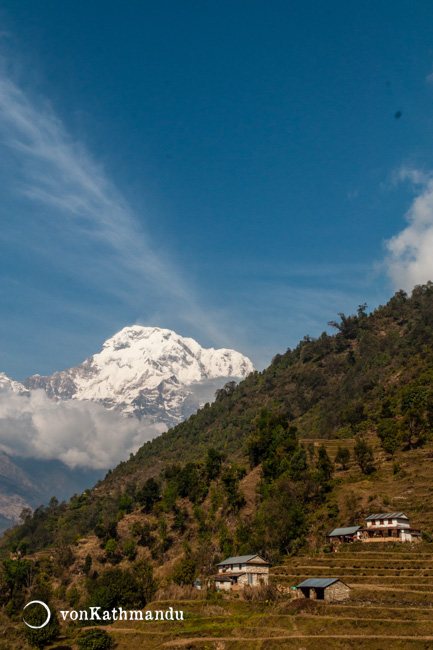
Tiny serene hamlets dot the trail
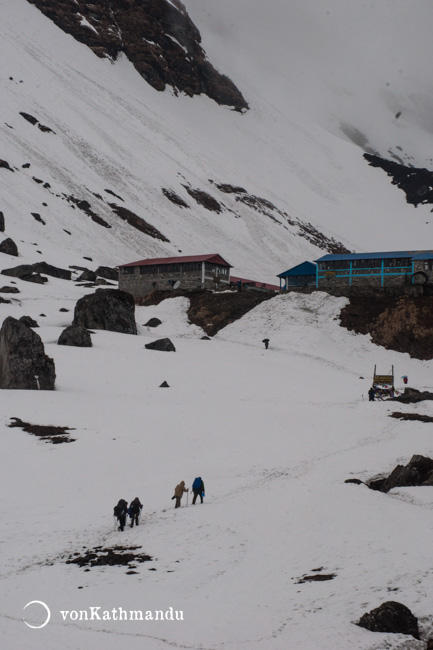
After days of walking, the sight of ABC is quite a relief
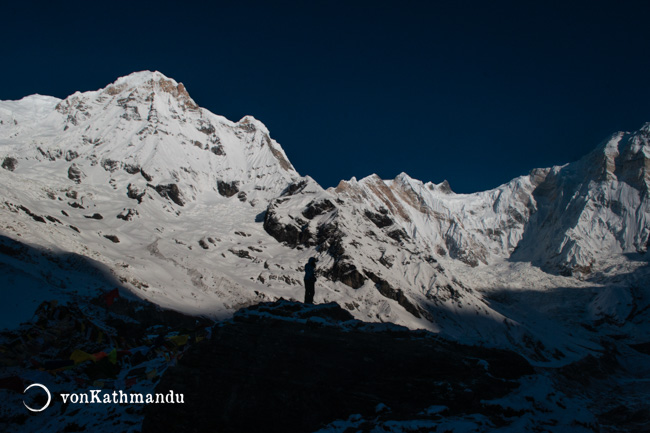
Silhouetted against glistening Annapurnas
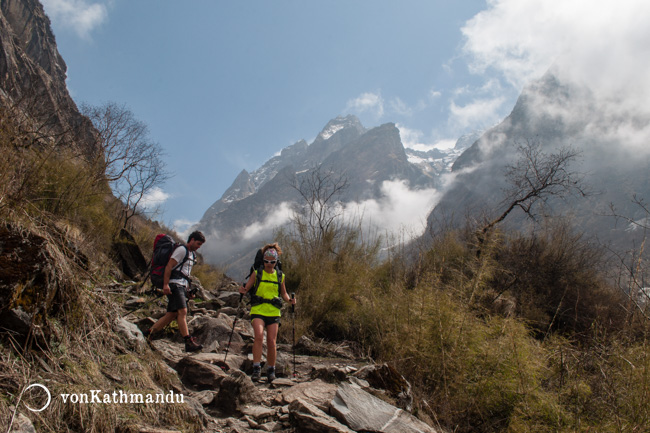
Heading back down to civilization from Annapurna Base Camp
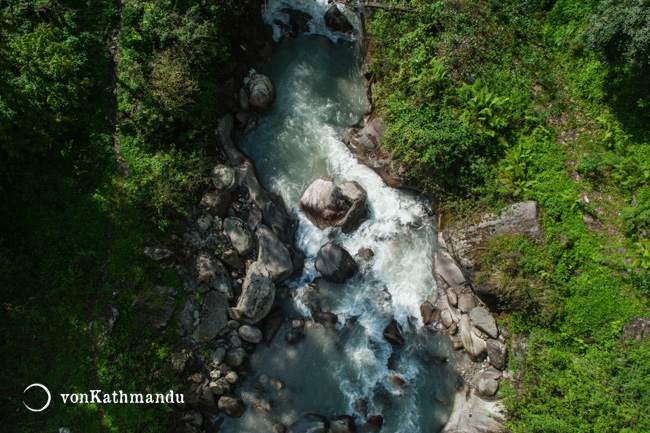
Modi River is fed by the the glaciers of Annapurna
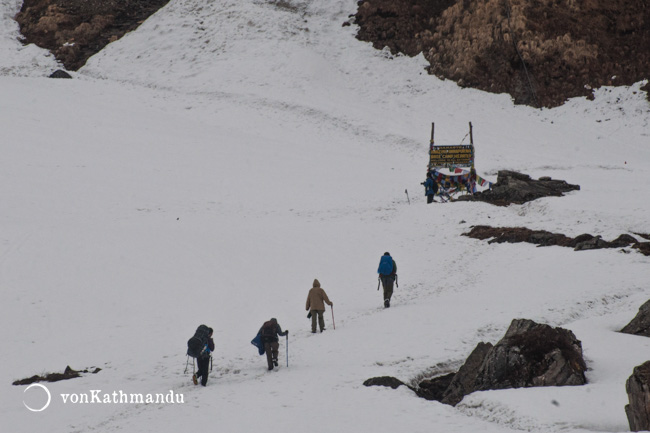
Final steps before reaching Annapurna Base Camp
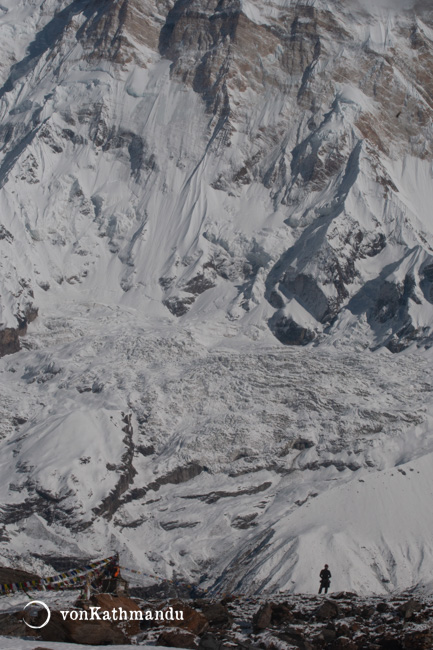
Strain your neck to see the full might of the mountains
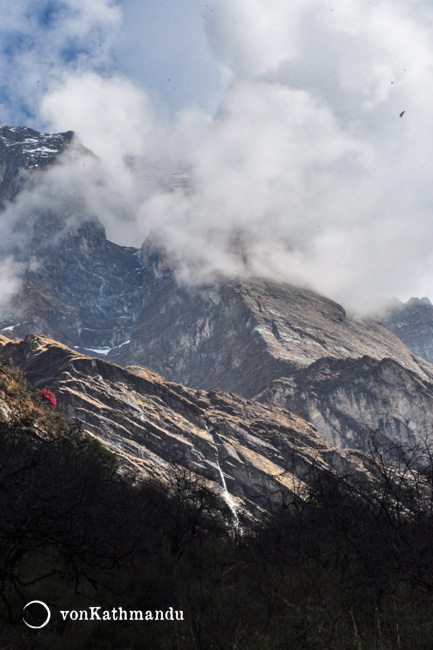
Countless waterfalls gushing down from high massifs of Hiuchuli and Machhapuchare are a sight to behold
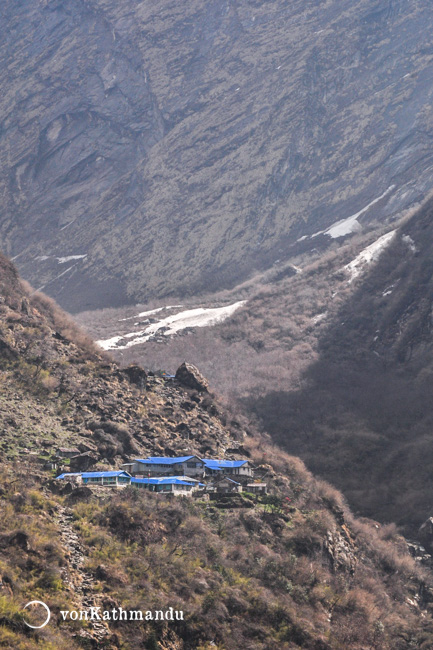
Tucked away in the nooks of Annapurna Valley, Sinuwa is a small settlement with great views of Fishtail
Itinerary
|
Day 1 |
Kathmandu - Pokhara - Hile - Banthanti |
|
|
Day 2 |
Banthanti - Ghorepani - Poon Hill - Ghorepani |
|
|
Day 3 |
Ghorepani - Tadapani |
|
|
Day 4 |
Tadapani - Chhomrong |
|
|
Day 5 |
Chhomrong - Himalaya |
|
|
Day 6 |
Himalaya - Annapurna Base Camp (ABC) |
|
|
Day 7 |
Annapurna Base Camp - Bamboo |
|
|
Day 8 |
Bamboo - Jhinu |
|
|
Day 9 |
Pokhara - Kathmandu |
|
|
Day 1 |
Kathmandu - Pokhara - Hile - Banthanti |
|
|
Fly from Kathmandu to Pokhara 30 mins In the morning, we take a scenic flight from Kathmandu to the gorgeous Pokhara city that sits by Phewa Lake and is dwarfed by the Annapurna range. |
|
|
Drive from Pokhara to Hile 2 to 3 hrs A drive from Pokhara takes us to Hile, from where we start the trek. (Note: If the flight gets delayed and we reach Pokhra later than 11:30 am, we drive directly to Ulleri. That way, we will make it to Banthanti before dark.) |
|
|
Trek from Hile to Banthanti 3 to 4 hrs We walk along the banks of the Modi River, passing several quaint villages, and after a steep uphill, we reach Ulleri. Banthanti, our camp for the night, is an hour further away. |
Meals Included: Breakfast
Accommodation: Mountain Lodge
|
Day 2 |
Banthanti - Ghorepani - Poon Hill - Ghorepani |
|
|
Trek from Banthanti to Ghorepani 2.5 to 3 hrs Today is mostly gradual uphill through lovely, peaceful forests. Before we know it, we reach Ghorepani to have our lunch. |
|
|
Hike to Poon Hill, and back 2 to 3 hrs Poon Hill is just one short but strenuous uphill away. Enjoy views of Dhaulagiri and Annapurna mountains over sunset from here. |
Meals Included: Breakfast
Accommodation: Mountain Lodge
|
Day 3 |
Ghorepani - Tadapani |
|
|
Trek from Ghorepani to Tadapani 4 to 5 hrs We follow the undulating trails along the forests passing several waterfalls and stream and reach Tadapani. |
Meals Included: Breakfast
Accommodation: Mountain Lodge
|
Day 4 |
Tadapani - Chhomrong |
|
|
Trek from Tadapani to Chhomrong 4 to 5 hrs |
Meals Included: Breakfast
Accommodation: Mountain Lodge
|
Day 5 |
Chhomrong - Himalaya |
|
|
Trek from Chhomrong to Himalaya 6 to 7 hrs |
Meals Included: Breakfast
Accommodation: Mountain Lodge
|
Day 6 |
Himalaya - Annapurna Base Camp (ABC) |
|
|
Trek from Himalaya to ABC 5 to 5.5 hrs |
Meals Included: Breakfast
Accommodation: Mountain Lodge
|
Day 7 |
Annapurna Base Camp - Bamboo |
|
|
Trek from Annapurna Base Camp to Bamboo 6 to 6.5 hrs |
Meals Included: Breakfast
Accommodation: Mountain Lodge
|
Day 8 |
Bamboo - Jhinu |
|
|
Trek from Bamboo to Jhinu 3 to 4 hrs |
|
|
Explore the Natural Hot Springs at Jhinu |
|
|
Drive from Jhinu to Pokhara 3 to 4 hrs |
Meals Included: Breakfast
Accommodation: Temple Tree Resort and Spa
|
Day 9 |
Pokhara - Kathmandu |
|
|
Explore Pokhara Spend some time by the lake or opt for one of the many activities the gorgeous lake town has to offer. |
|
|
Evening back from Pokhara to Kathmandu 30 mins A short but scenic flight back to Kathmandu watching the mountains you saw up close during the trek. |
Meals Included: Breakfast
Mountain Lodge |
X Close Accommodation Popup
X Close Popup
Nepal
Mountain lodges are the basic accommodation set up by locals to cater to trekkers in the trails. The common features across all lodges are standard rooms, a spacious and heated dining hall, and a restaurant with a menu. The rooms in mountain lodges generally have two or three twin beds with a mattress and blanket. If you are used to sleeping warm, we highly recommend bringing your own sleeping bag and liner. Other amenities could be a table, hanger, and dustbin but do not expect to have charging ports and attached toilets in the rooms. Moreover, it is mandatory to have meals in the facility you’re staying at.
Room Amenities
| • | Shared Toilet |
Property Amenities
| • | Restaurant and Bar | • | Outdoor Seating | • | Mountain Views |
Mountain Lodge |
X Close Accommodation Popup
X Close Popup
Nepal
Mountain lodges are the basic accommodation set up by locals to cater to trekkers in the trails. The common features across all lodges are standard rooms, a spacious and heated dining hall, and a restaurant with a menu. The rooms in mountain lodges generally have two or three twin beds with a mattress and blanket. If you are used to sleeping warm, we highly recommend bringing your own sleeping bag and liner. Other amenities could be a table, hanger, and dustbin but do not expect to have charging ports and attached toilets in the rooms. Moreover, it is mandatory to have meals in the facility you’re staying at.
Room Amenities
| • | Shared Toilet |
Property Amenities
| • | Restaurant and Bar | • | Outdoor Seating | • | Mountain Views |
Mountain Lodge |
X Close Accommodation Popup
X Close Popup
Nepal
Mountain lodges are the basic accommodation set up by locals to cater to trekkers in the trails. The common features across all lodges are standard rooms, a spacious and heated dining hall, and a restaurant with a menu. The rooms in mountain lodges generally have two or three twin beds with a mattress and blanket. If you are used to sleeping warm, we highly recommend bringing your own sleeping bag and liner. Other amenities could be a table, hanger, and dustbin but do not expect to have charging ports and attached toilets in the rooms. Moreover, it is mandatory to have meals in the facility you’re staying at.
Room Amenities
| • | Shared Toilet |
Property Amenities
| • | Restaurant and Bar | • | Outdoor Seating | • | Mountain Views |
Mountain Lodge |
X Close Accommodation Popup
X Close Popup
Nepal
Mountain lodges are the basic accommodation set up by locals to cater to trekkers in the trails. The common features across all lodges are standard rooms, a spacious and heated dining hall, and a restaurant with a menu. The rooms in mountain lodges generally have two or three twin beds with a mattress and blanket. If you are used to sleeping warm, we highly recommend bringing your own sleeping bag and liner. Other amenities could be a table, hanger, and dustbin but do not expect to have charging ports and attached toilets in the rooms. Moreover, it is mandatory to have meals in the facility you’re staying at.
Room Amenities
| • | Shared Toilet |
Property Amenities
| • | Restaurant and Bar | • | Outdoor Seating | • | Mountain Views |
Mountain Lodge |
X Close Accommodation Popup
X Close Popup
Nepal
Mountain lodges are the basic accommodation set up by locals to cater to trekkers in the trails. The common features across all lodges are standard rooms, a spacious and heated dining hall, and a restaurant with a menu. The rooms in mountain lodges generally have two or three twin beds with a mattress and blanket. If you are used to sleeping warm, we highly recommend bringing your own sleeping bag and liner. Other amenities could be a table, hanger, and dustbin but do not expect to have charging ports and attached toilets in the rooms. Moreover, it is mandatory to have meals in the facility you’re staying at.
Room Amenities
| • | Shared Toilet |
Property Amenities
| • | Restaurant and Bar | • | Outdoor Seating | • | Mountain Views |
Mountain Lodge |
X Close Accommodation Popup
X Close Popup
Nepal
Mountain lodges are the basic accommodation set up by locals to cater to trekkers in the trails. The common features across all lodges are standard rooms, a spacious and heated dining hall, and a restaurant with a menu. The rooms in mountain lodges generally have two or three twin beds with a mattress and blanket. If you are used to sleeping warm, we highly recommend bringing your own sleeping bag and liner. Other amenities could be a table, hanger, and dustbin but do not expect to have charging ports and attached toilets in the rooms. Moreover, it is mandatory to have meals in the facility you’re staying at.
Room Amenities
| • | Shared Toilet |
Property Amenities
| • | Restaurant and Bar | • | Outdoor Seating | • | Mountain Views |
Mountain Lodge |
X Close Accommodation Popup
X Close Popup
Nepal
Mountain lodges are the basic accommodation set up by locals to cater to trekkers in the trails. The common features across all lodges are standard rooms, a spacious and heated dining hall, and a restaurant with a menu. The rooms in mountain lodges generally have two or three twin beds with a mattress and blanket. If you are used to sleeping warm, we highly recommend bringing your own sleeping bag and liner. Other amenities could be a table, hanger, and dustbin but do not expect to have charging ports and attached toilets in the rooms. Moreover, it is mandatory to have meals in the facility you’re staying at.
Room Amenities
| • | Shared Toilet |
Property Amenities
| • | Restaurant and Bar | • | Outdoor Seating | • | Mountain Views |
Temple Tree Resort and Spa |
X Close Accommodation Popup
X Close Popup
Pokhara, Nepal
Room Amenities
| • | Free Wi-Fi | • | Room Service | • | Air Conditioning | • | Balcony | • | TV | • | Mini Bar | • | Private Bathroom | • | Hot Shower | • | Free Toiletries | • | Towels | • | Slippers | • | Power Socket | • | Electric Kettle | • | Daily Housekeeping |
Property Amenities
| • | Restaurant and Bar | • | Child-friendly | • | Garden | • | Swimming Pool | • | Plunge Pool | • | Massage | • | Spa | • | Laundry | • | Fire Extinguisher | • | POS Machine | • | Outdoor Seating | • | Mountain Views |
Customize this trip
Take a heli back.
For those short on time or looking to add an exhilarating experience of flying over the majestic Himalayas, you have the option to charter a private helicopter on the way down. Inquire for prices and options!
Kathmandu Hotel and Transfers
-
If you’d like us to organize airport transfers and arrange your stay in Kathmandu or any other cities, let us know. We’re happy to give you options based on your preference, and book them for you.
Here’s one of our popular 2 days add-on: USD 185 per person:
- Airport pick up and drop off, facilitated by an English-speaking representative
- 2 nights in a four-star hotel in Kathmandu (Hotel Shankar or similar) on bed & breakfast plan and twin-sharing basis
